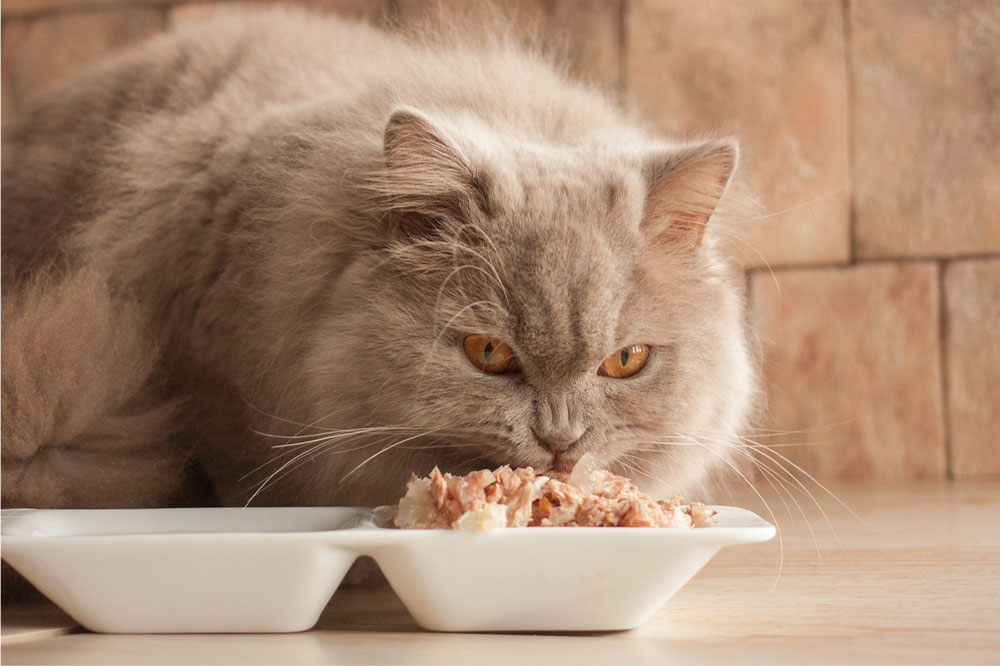10 human foods that are safe and nutritious for cats

Parenting a cat is a wonderful experience. But it may stir up several questions, including what foods are safe for them. Of course, you’d want to feed the feline treats and package cat food designed for them. But introducing human foods could help add more nutrition to their meals. You may also want to avoid cooking separate meals for them all the time. Therefore, here are ten safe options that you could feed your cat.
Spinach
Spinach is a highly nutritious food that is not only beneficial for humans but also safe for cats. It is abundant in healthy properties such as vitamins A, C, and K. The leafy green vegetable is also high in minerals, including calcium and iron, which are essential to boost your feline pet’s overall health. You could steam spinach without additional spices, salts, or seasoning, as these ingredients are unsafe for cats. Cats do not like vegetables, so you should add small amounts of cooked leafy greens to their meal regime.
Salmon
Introducing fish options like salmon to your cat’s meal regime is one of the best ways to improve their nutritional intake. The food contains omega-3 and omega-6 fatty acids, which are vital for their health. The fish also contains proteins, vitamins, and minerals such as potassium, selenium, niacin, and vitamins B6 and B12. Salmon could be served to cats as a standalone treat or mixed with other meals. But you should ensure the food is cooked (not raw) before feeding it to your pet cat. Furthermore, it is also essential to remove the fish’s bones, head, and tail to avoid choking after consumption.
Eggs
Foods like eggs are as delicious as they are healthy for cats. However, before you serve it to your pet, ensure the food is cooked. If the eggs are served raw, it may introduce food-borne illnesses like E. coli or salmonella to your pet’s system, which could trigger illnesses and diseases. Moreover, ensure that you feed them scrambled or boiled eggs without the egg yolk or additional seasoning. Adding eggs to their meal regime could help nourish their body with proteins and B vitamins required to manage their health.
Chicken
This is another healthy food addition that you could add to your pet’s meal plan. Cook the meat thoroughly before serving it to the feline. Moreover, chicken skin contains fat, so removing it could help reduce its absorption by a cat’s digestive system. Also, stick to serving lean chicken bits without the bones to prevent a choking hazard. As for its benefits, chicken is rich in proteins, which could help manage heart health, improve reproductive health, and complement vision.
Cheese
Most of us enjoy dairy products like cheese occasionally. The good news is that the food is also beneficial for cats. The food is a rich source of calcium and protein, which are nutrients that could gain their attention immediately. The food is also low in carbs, which is nice considering cats do not require the element in their meal regime. You could also hide your cat’s prescription in tiny bites of cheese after consultation with an expert to make the treatment option easier for them to digest. You should also ensure they eat cheese in moderation, as too much cheese could harm their digestive health.
Bananas
Since cats are obligate carnivores, they may also dislike eating fruits like bananas. However, adding food to their meals could benefit their overall health in several ways. The best way to get your pet to like bananas is by turning them into an attractive snack. You can do this by slicing up the fruit and freezing it before giving it to them as a treat occasionally. The fruit is abundant in potassium, which could help regulate body functions, including nerve impulses, muscle contractions, and heart function. It also contains soluble fibers that improve their digestive health. However, avoid giving them too many banana slices to eat as it could adversely affect their health.
Watermelon
Watermelons are dense in a range of healthy nutrients necessary to boost your pet’s health. It contains benefits such as vitamins A, B1, B5, and C, which may improve their overall health. Magnesium and potassium are other elements that could complement your pet’s well-being. To get your feline friend to eat the fruit, you may need to slice it up into shapes of your choice and freeze it. Once they are frozen, lay out some pieces between meals for them to enjoy. Also, as watermelon seeds may trigger a choking hazard, it is better that you remove them.
Strawberries
Strawberries are abundant in nutrients, including vitamins, minerals, fibers, and antioxidants that help manage your cat’s health. Cut them into bite-sized pieces before serving them to your feline pets. You could also freeze these slices of strawberry, and your cat may still enjoy munching on them. Apart from strawberries, you could add alternatives like blackberries, raspberries, cranberries, and blueberries to your pet’s meal regime to help improve their nutritional levels.
Oatmeal
Oatmeal is a breakfast cereal that is safe and healthy for your pet cat. The food is a rich source of vitamins B and E, selenium, iron, fiber, manganese, antioxidants, and folic acid. These properties are essential to strengthen your pet’s nails, teeth, and bones. The food is also a healthy whole grain that helps manage your pet’s digestion. Furthermore, introducing oatmeal to your cat’s meal plans may improve zinc absorption, which is necessary for healthy skin and fur. The cereal is also rich in manganese, which is known to help manage the bones and thyroid in pet cats. Other whole grains foods to add to your pet’s meal plans include barley, couscous, brown rice, cooked millet, and wheat berries.






